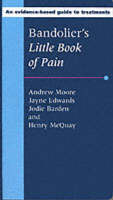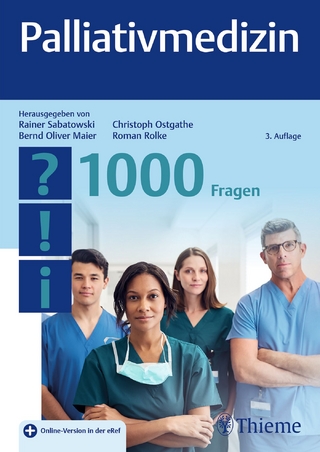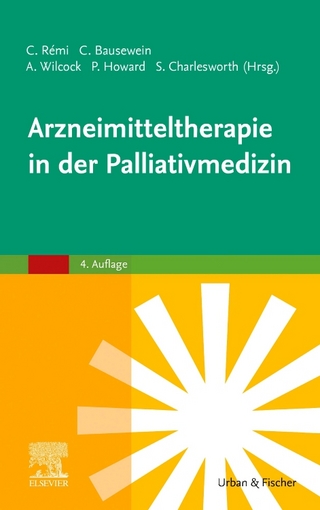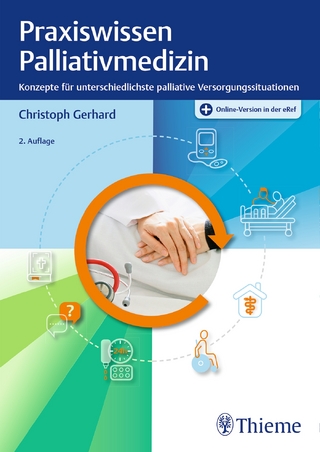
Bandolier's Little Book of Pain
Oxford University Press (Verlag)
978-0-19-263247-0 (ISBN)
- Titel ist leider vergriffen;
keine Neuauflage - Artikel merken
Acute and chronic pain place a huge burden on our society. Approximately 10% of the population in Western countries report suffering from chronic pain, and both chronic and acute pain are responsible for high absenteeism in the workplace. It is therefore crucial that we have effective ways of treating pain. Unfortunately though, we have no objective measures of pain - no blood tests, no urine dipsticks. We have to rely on what the patient tells us. So how then do we know what are and what are not effective pain treatments? It is here that the principles of evidence-based medicine have been of great value - helping us to understand the most effective forms of pain treatment. Bandolier's Little Book of Pain is a unique portable guide to evidence-based pain treatments. For each possible treatment, the book provides the evidence supporting the efficacy of the treatment, along with a clinical bottom line, for those requiring immediate information. Written by world leaders in the field of evidenced-based pain treatments, the book will be indispensable for the multi-disciplinary professionals managing acute and chronic pain in primary and secondary care.
SECTION 1: UNDERSTANDING EBM ; 1.1 Pain - there's a lot of it about ; 1.2 Measuring pain ; 1.3 Outcomes ; 1.4 Clinical trial methods ; 1.5 Systematic review and meta-analysis ; 1.6 Size ; 1.7 Outputs and utility ; 1.8 Adverse events ; 1.9 Placebo ; 1.10 Being sure of a result ; SECTION 2: ACUTE PAIN ; 2.1 Introduction ; 2.2 League table of analgesics in acute pain ; 2.3 Aspirin in postoperative pain ; 2.4 Ibuprofen in postoperative pain ; 2.5 Paracetamol (acetaminophen) in acute postoperative pain ; 2.6 Paracetamol (acetaminophen) with codeine in acute postoperative pain ; 2.7 Diclofenac in postoperative pain ; 2.8 Injected morphine in postoperative pain ; 2.9 Dihydrocodeine in postoperative pain ; 2.10 Oral codeine in acute postoperative pain ; 2.11 Dextropropoxyphene alone and with paracetamol in postoperative pain ; 2.12 Intramuscular pethidine in postoperative pain ; 2.13 Naproxen in postoperative pain ; 2.14 Oral tramadol in postoperative pain ; 2.15 Paracetamol plus tramadol for acute pain ; 2.16 Oral rofexcoxib in postoperative pain ; 2.17 Transcutaneous electrical nerve stimulation (TENS) in acute postoperative pain and labour pain ; 2.18 Topically applied non-steroidal anti-inflammatory drugs in acute pain ; 2.19 Analgesics for dysmenorrhoea ; 2.20 Other acute pain interventions with evidence of efficacy ; 2.21 Other acute pain interventions without evidence of efficacy ; 2.22 Do NSAIDS inhibit bone healing? ; SECTION 3: MIGRAINE AND HEADACHE ; 3.1 Introduction ; 3.2 Diagnosing headache and migraine ; 3.3 Migraine: league tables of relative efficacy ; 3.4 Aspirin plus metoclopramide for acute migraine ; 3.5 Paracetamol for acute migraine ; 3.6 Ibuprofen for acute migraine ; 3.7 Sumatriptan for acute migraine ; 3.8 Oral naratriptan for acute migraine ; 3.9 Oral rizatriptan for acute migraine ; 3.10 Oral zolmitriptan for acute migraine ; 3.11 Oral eletriptan for acute migraine ; 3.12 Which migraine treatment strategy is most effective? ; 3.13 Prophylaxis for migraine ; SECTION 4: CHRONIC PAIN ; 4.1 Introduction ; 4.2 Antidepressants for diabetic neuropathy and postherpetic neuralgia ; 4.3 Anticonvulsants for diabetic neuropathy and postherpetic neuralgia ; 4.4 Topical capsaicin for pain relief ; 4.5 TENS for chronic pain ; 4.6 Fibromyalgia ; 4.7 Back Pain ; 4.8 Epidural corticosteroids for back pain ; 4.9 Steroid injections for shoulder and elbow disorders ; 4.10 Systemic local anaesthetic-type drugs in chronic pain ; 4.11 Cognitive behaviour therapy and behaviour therapy for chronic pain ; 4.12 Intravenous regional sympathetic blockade for reflex sympathetic dystrophy ; 4.13 Treatments for intermittent claudication ; 4.14 Cannabis for pain relief and for spasticity ; SECTION 5: ARTHRITIS ; 5.1 Arthritis and joints ; 5.2 Lifestyle and exercise ; 5.3 NSAIDs for treating Osteoarthritis ; 5.4 Topical applied NSAIDs for chronic pain ; 5.5 Coxibs for treating rheumatoid and osteoarthritis ; 5.6 Adverse effects of NSAIDs and coxibs ; 5.7 Paracetamol (acetaminophen) for osteoarthritis ; 5.8 TNF antibodies and rheumatoid arthritis ; 5.9 Fish Oil for rheumatoid arthritis ; 5.10 Sulfasalazine for rheumatoid arthritis ; SECTION 6: COMPLEMENTARY AND ALTERNATIVE THERAPIES ; 6.1 Complementary and alternative therapies ; 6.2 Supplements and herbal remedies ; 6.3 Acupuncture ; 6.4 Homeopathy ; 6.5 Other complementary or alternative therapies for pain ; SECTION 7: CANCER AND PALLIATIVE CARE ; 7.1 Cancer and palliative care ; 7.2 Non-steroidal anti-inflammatory drugs for cancer pain ; 7.3 Radiotherapy for painful bone metastases ; 7.4 Strontium 89 therapy for painful bony metastases ; 7.5 Intracerebroventricular opioid therapy compared with epidural and subarachnoid opioids for intractable cancer pain ; 7.6 Neurolytic coeliac plexus block (NCPB) for cancer pain ; 7.7 Nilutamide plus orchidectomy for metastatic prostatic cancer ; 7.8 Complementary therapy at the end of Life ; 7.9 Palliative care delivery system ; SECTION 8: MANAGEMENT ISSUES ; 8.1 Easy targets are not always the right ones ; 8.2 Better prescribing of NSAIDs ; 8.3 Quality improvement by audit: Pain relief after day surgery ; 8.4 Improving oral postoperative analgesia ; 8.5 Do-it-yourself pain control ; SECTION 9: APPENDICES ; 9.1 Glossary ; 9.2 Using the Oxman and Guyatt scoring system for reviews ; 9.3 Bandolier's 10 tips for healthy living ; 9.4 Cochrane Collaboration and Pain ; 9.5 Evidence based organisations, websites and resources
| Erscheint lt. Verlag | 19.6.2003 |
|---|---|
| Zusatzinfo | numerous figures and tables |
| Verlagsort | Oxford |
| Sprache | englisch |
| Maße | 107 x 186 mm |
| Gewicht | 252 g |
| Themenwelt | Medizin / Pharmazie ► Medizinische Fachgebiete ► Palliativmedizin |
| Medizin / Pharmazie ► Medizinische Fachgebiete ► Schmerztherapie | |
| ISBN-10 | 0-19-263247-7 / 0192632477 |
| ISBN-13 | 978-0-19-263247-0 / 9780192632470 |
| Zustand | Neuware |
| Haben Sie eine Frage zum Produkt? |
aus dem Bereich


